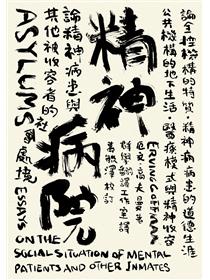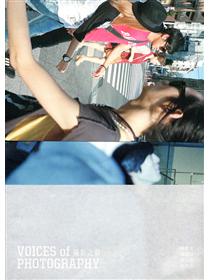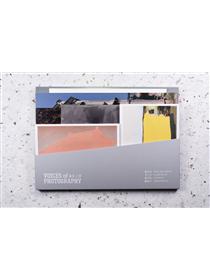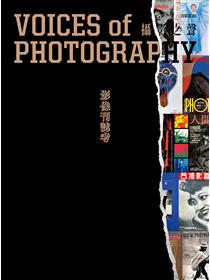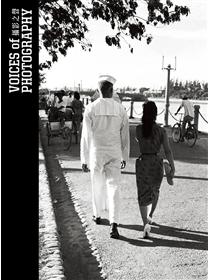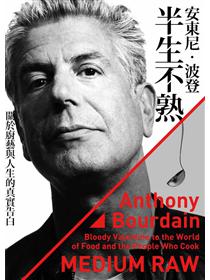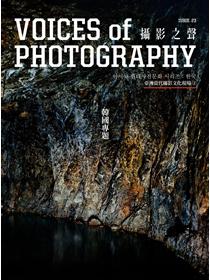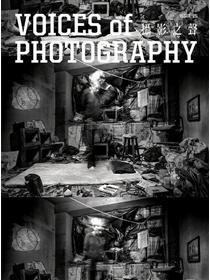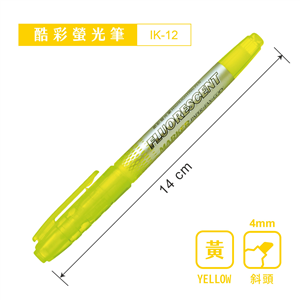



Voices of Photography 攝影之聲
Issue 23 : 韓國專題
South Korea Issue
《攝影之聲》首次跨境編輯合作,亞洲當代攝影文化現場首波推出 : 韓國 !
「亞洲當代攝影文化現場系列」是由《攝影之聲》發起,以亞洲現地視角出發、近觀當代攝影文化與藝術實踐的專題系列,期望逐步拓展我們對影像文化的論域及認識範圍。在這個系列計畫中,我們擴大亞際連結,邀請位於亞洲不同地區的影像文化工作者、創作者參與《攝影之聲》的編輯陣容,嘗試從跨域文化觀察以及在地現場論述的視野與多重對照,繪製亞洲當代攝影發展的形廓概貌。
本期是此系列推出的首波專題,我們從東北亞的韓半島出發,邀請韓國「Seoul Lunar Photo」攝影節創辦人暨策展人、韓國國立現代美術館研究企劃出版組組長宋修庭擔任本次專題的客座主編,聚焦討論近十年來韓國攝影的發展歷程,同時特寫介紹十位韓國當代攝影創作者,從他們的作品中折射出韓國攝影的當前路徑;宋修庭也特別為此專題在首爾主持了一場不同世代的交流對談,邀集韓國影像教育與文化工作者、攝影藝術家具本昌、姜洪求以及影像創作者、藝文空間經營者洪辰煊,細細檢視韓國當代攝影藝術與文化的脈動起伏。此外,韓國策展人李庭旼、《VOSTOK》攝影刊物主編朴智洙,則針對韓國當代攝影創作以及主要的攝影出版、展演活動、藝術場館與新生空間,乃至韓國官方及民間設置的獎補助機制等面向作了頗為全面的引介,為我們認識韓國攝影文化樣態開啟了一個絕佳的入口。
此次是《攝影之聲》首次展開的亞細亞跨境編輯製作,在這個專題系列中,我們的編輯陣線所帶來的觀察、書寫與對話,目的不在競賽或炫示任何國族的文化腕力;相反地,讀者在這個系列中將看到的,是來自每一個貼近亞洲攝影文化現場、誠懇而具批判性的審視和反思。以這個系列專題做為節點,我們將一起橫觀當代攝影在亞洲的發展動態,分享、學習彼此相似與差異的經驗,並共感當代攝影創作、歷史和文化在不同地域所蘊含的潛力及挑戰,藉以反身回視我們的文化處境。
在韓半島分斷議題因近期國際政治波動,屢屢成為世界矚目的頭條焦點之際,正在製作這份專題的我們,也切實再感受到東亞歷史與地緣政治的連動性,而更加深了我們對於關注亞洲區域連帶與文化狀態的需要。期望能透過這個專題系列,使作為亞洲文化圈一份子的我們,能夠不斷突破對於「世界(攝影)觀」的認知框架,縮減我們與鄰近區域的距離,並獲得更為多樣、更為清晰的認識圖景。
“A Study of Contemporary Photography in Asia”, a special series initiated by Voices of Photography, takes a close look at contemporary photography culture and art practice from the Asian perspective and aims to gradually expand our knowledge of image culture and reflection with our readers. In this series, we extended our reach and invited image cultural workers and creators from across Asia to join the editing lineup at Voices of Photography in order to draw a profile of the development of Asia’s contemporary photography scene through multi-cultural observations, in the field discussions and cross references.
In the first installment of this series, we take off from the Korean Peninsula in Northeast Asia. We invited Sujong Song, the founder and director of the Seoul Lunar Photo and now working in the National Museum of Modern and Contemporary Art in Seoul, South Korea, to join us as a Guest Editor and discuss in depth the development of photography in South Korea in the past decade. At the same time, she features ten South Korean contemporary photographers whose work sheds light on the current state of photography in South Korea. Song also hosted an intergenerational dialogue in Seoul specially for this feature with Bohnchang Koo and Honggoo Kang, both photographers, as well as image education and cultural workers, and Jinhwon Hong, an image creator and director of “space nowhere”. Together, they examined closely the ups and downs of South Korea’s contemporary photography art and culture. In addition, Jungmin Lee, a South Korean curator, and Jisoo Park, the editor of the photography magazine Vostok, explore in detail South Korea’s contemporary photography works, publications, exhibitions, art venues and “new(sinsaeng) spaces”, and the mechanism of government and private awards and subsidies in the country, allowing us insight into the culture of photography in South Korea.
This is our first attempt at a collaboration with editors from across Asia. In this special series, as our team of editors share their observations, writings and dialogues, their aim is not to outdo one another, nor show off the cultural power of their countries. On the contrary, what the readers can see for themselves in this series are sincere yet critical analyses and reflections of the cultural scene of photography in Asia. Using this series as a pivot, we will take a transverse view of the development of contemporary photography in Asia and share our experiences both similar and different, as well as the potential and challenges of contemporary photography creation, history and culture in different regions. Through this, we also look back at our own cultural situation.
As we were making the South Korea photography feature, the divided North and South Korea hit headlines across the world due to recent international political turbulence making us feel keenly conscious of the interconnectedness of East Asian histories and geopolitics. We also realized the need to pay close attention to regional linkages and influences in Asia. As members of the Asian cultural circle, we hope to continue to have breakthroughs in how we appreciate the world (and photography) and bring our neighboring regions closer to us so that our understanding can become clearer and more diverse, all through this special series.
 3收藏
3收藏
優惠價: 9 折, NT$ 405 NT$ 450
本商品已絕版
Voices of Photography 攝影之聲
Issue 23 : 韓國專題
South Korea Issue
《攝影之聲》首次跨境編輯合作,亞洲當代攝影文化現場首波推出 : 韓國 !
「亞洲當代攝影文化現場系列」是由《攝影之聲》發起,以亞洲現地視角出發、近觀當代攝影文化與藝術實踐的專題系列,期望逐步拓展我們對影像文化的論域及認識範圍。在這個系列計畫中,我們擴大亞際連結,邀請位於亞洲不同地區的影像文化工作者、創作者參與《攝影之聲》的編輯陣容,嘗試從跨域文化觀察以及在地現場論述的視野與多重對照,繪製亞洲當代攝影發展的形廓概貌。
本期是此系列推出的首波專題,我們從東北亞的韓半島出發,邀請韓國「Seoul Lunar Photo」攝影節創辦人暨策展人、韓國國立現代美術館研究企劃出版組組長宋修庭擔任本次專題的客座主編,聚焦討論近十年來韓國攝影的發展歷程,同時特寫介紹十位韓國當代攝影創作者,從他們的作品中折射出韓國攝影的當前路徑;宋修庭也特別為此專題在首爾主持了一場不同世代的交流對談,邀集韓國影像教育與文化工作者、攝影藝術家具本昌、姜洪求以及影像創作者、藝文空間經營者洪辰煊,細細檢視韓國當代攝影藝術與文化的脈動起伏。此外,韓國策展人李庭旼、《VOSTOK》攝影刊物主編朴智洙,則針對韓國當代攝影創作以及主要的攝影出版、展演活動、藝術場館與新生空間,乃至韓國官方及民間設置的獎補助機制等面向作了頗為全面的引介,為我們認識韓國攝影文化樣態開啟了一個絕佳的入口。
此次是《攝影之聲》首次展開的亞細亞跨境編輯製作,在這個專題系列中,我們的編輯陣線所帶來的觀察、書寫與對話,目的不在競賽或炫示任何國族的文化腕力;相反地,讀者在這個系列中將看到的,是來自每一個貼近亞洲攝影文化現場、誠懇而具批判性的審視和反思。以這個系列專題做為節點,我們將一起橫觀當代攝影在亞洲的發展動態,分享、學習彼此相似與差異的經驗,並共感當代攝影創作、歷史和文化在不同地域所蘊含的潛力及挑戰,藉以反身回視我們的文化處境。
在韓半島分斷議題因近期國際政治波動,屢屢成為世界矚目的頭條焦點之際,正在製作這份專題的我們,也切實再感受到東亞歷史與地緣政治的連動性,而更加深了我們對於關注亞洲區域連帶與文化狀態的需要。期望能透過這個專題系列,使作為亞洲文化圈一份子的我們,能夠不斷突破對於「世界(攝影)觀」的認知框架,縮減我們與鄰近區域的距離,並獲得更為多樣、更為清晰的認識圖景。
“A Study of Contemporary Photography in Asia”, a special series initiated by Voices of Photography, takes a close look at contemporary photography culture and art practice from the Asian perspective and aims to gradually expand our knowledge of image culture and reflection with our readers. In this series, we extended our reach and invited image cultural workers and creators from across Asia to join the editing lineup at Voices of Photography in order to draw a profile of the development of Asia’s contemporary photography scene through multi-cultural observations, in the field discussions and cross references.
In the first installment of this series, we take off from the Korean Peninsula in Northeast Asia. We invited Sujong Song, the founder and director of the Seoul Lunar Photo and now working in the National Museum of Modern and Contemporary Art in Seoul, South Korea, to join us as a Guest Editor and discuss in depth the development of photography in South Korea in the past decade. At the same time, she features ten South Korean contemporary photographers whose work sheds light on the current state of photography in South Korea. Song also hosted an intergenerational dialogue in Seoul specially for this feature with Bohnchang Koo and Honggoo Kang, both photographers, as well as image education and cultural workers, and Jinhwon Hong, an image creator and director of “space nowhere”. Together, they examined closely the ups and downs of South Korea’s contemporary photography art and culture. In addition, Jungmin Lee, a South Korean curator, and Jisoo Park, the editor of the photography magazine Vostok, explore in detail South Korea’s contemporary photography works, publications, exhibitions, art venues and “new(sinsaeng) spaces”, and the mechanism of government and private awards and subsidies in the country, allowing us insight into the culture of photography in South Korea.
This is our first attempt at a collaboration with editors from across Asia. In this special series, as our team of editors share their observations, writings and dialogues, their aim is not to outdo one another, nor show off the cultural power of their countries. On the contrary, what the readers can see for themselves in this series are sincere yet critical analyses and reflections of the cultural scene of photography in Asia. Using this series as a pivot, we will take a transverse view of the development of contemporary photography in Asia and share our experiences both similar and different, as well as the potential and challenges of contemporary photography creation, history and culture in different regions. Through this, we also look back at our own cultural situation.
As we were making the South Korea photography feature, the divided North and South Korea hit headlines across the world due to recent international political turbulence making us feel keenly conscious of the interconnectedness of East Asian histories and geopolitics. We also realized the need to pay close attention to regional linkages and influences in Asia. As members of the Asian cultural circle, we hope to continue to have breakthroughs in how we appreciate the world (and photography) and bring our neighboring regions closer to us so that our understanding can become clearer and more diverse, all through this special series.

※ 二手徵求後,有綁定line通知的讀者,
該二手書結帳減5元。(減5元可累加)
請在手機上開啟Line應用程式,點選搜尋欄位旁的掃描圖示
即可掃描此ORcode
|
||||||||||||||||||
|
||||||||||||||||||
|
||||||||||||||||||


